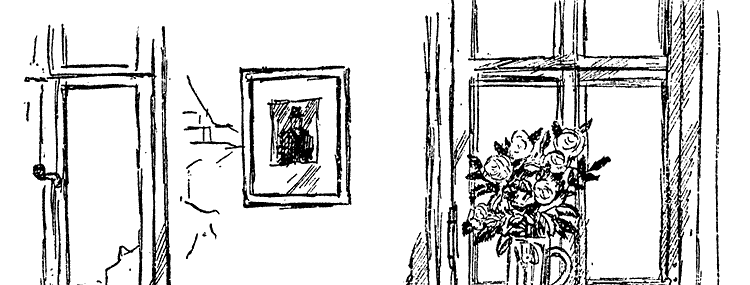to fabulize

The rose bush did not know where it had been born and where it had passed its early days: it is well known that flowers have a bad memory.
The book is from a series called ‘Oddly Modern Fairy Tales’, but although the stories bear the mark of modernity on their brow and are somewhat oddly put together, it is a stretch of the imagination to call them fairy tales. They are – or start off – didactic, patronizing, and unambiguous. I suppose it is the last two of these that are the most difficult to stomach, but I was taken in by the familiarity of the translator’s name and assumed one sort of oddness – that of the uncanny. I found instead the dismal oddity of a party member toeing a rather unimaginative line. There are no paeans to tractors, but one can hear the engines sputtering in the workers’ paradise off-page. 1
Two things, in particular, struck me about the stories and hindered my enjoyment. In the early stories, from What Little Peter’s Friends Told Him, a little boy from a poor household, Peter, is stuck in bed with a broken leg. He is lonely because his mother has to go to work and his erstwhile friends continue to play outside and never think to come visit their less fortunate comrade. Poor Peter is left to his misery for a fair amount of time (both literal and narrative), but – as is the nature of fairy tales – household objects (pieces of coal, a matchbox, a water bottle) start to talk to him and tell him stories of humanity’s stupidity and the cruelty they’ve witnessed in their journey from mine/forest/furnace to Peter’s room.
One grants the animism, but cannot overlook the practical details: why would a lump of coal take a detour to a rich man’s house before ending up in a poor household? If the lump of coal was stuck in the pocket of the sole survivor of the mine explosion (and so witnessed the rich man’s party with the old man’s indignation), how did it come to be in the coal scuttle of a completely unrelated household? Why did the old man not burn it himself, as the weather was brutally cold? Allowing a subterranean economy in which members of the rich man’s household staff steal the coal and sell it to poorer households, why is that social subversion not mentioned, but only the explosion in the mine that kills the miners, followed by the rich man’s glittering party? One tries to take the stories on their own terms, but these types of narrative gaps make it difficult to do so. Certainly one does not expect a piece of coal or a match or a water bottle to be completely reliable narrators, but in the service of the story one hopes that they will make sense within their limitations, like the talking animals that appear in fables from antiquity, through Reynard the Fox and co., to Perrault and Grimm.
Perhaps the difficulty for me was that the stories were didactic without being edifying. It is all well and good to break the world down by class, but when the limit of that analysis is the universal stupidity of all – combined with suffering among the poor, cupidity among the bourgeoisie, and heaven knows what among the aristocrats – there isn’t much room for the reader to identify with anyone at all. ‘Why?’ is certainly a very good question to ask when you are hungry and all the eggs from the nearest chicken are sent to some rich schmuck in the city, but it is insufficient as an end – and on the whole, the Red Countess doesn’t provide tidy endings, although the stories tend to finish on a valedictory note. 2 They are good stories to think about (PDF: 1925 translation by Ida Dailes), and ultimately I enjoyed them as a chance to think and remember other stories I liked better – stories I might be tempted to call edifying, but that I suppose merely better suit my own class, tastes, and pretensions. 3
- Let me take a step back. I was perhaps not in a mood to be pleased. It was Saturday, and I had managed to finish up my work for the week so I had the entire weekend free. This felt like an unusual occurrence, particularly in the past few months. Looking about for a way to occupy my time, I tried to watch Preston Sturges’ Sullivan’s Travels – you know, the one about a screenwriter who goes slumming to try to understand human misery to justify making a dreary realist movie. Shenanigans would ensue, but the bullying studio executives, the enabling servants, and the grotesque (not least because supposedly humorous) image of Charles Moore hanging by the neck from a hole in the ceiling of a moving bus left me in need of a different diversion.[↩]
- There are exceptions, but they seem to belong to a more Catholic period.[↩]
- I perhaps did not highlight the best of the bunch here – the title story from the collection was particularly interesting, but suffered from some of the problems alluded to here, not least in that the character (who in an ordinary fairy tale would be the heroine) is sent off to an insane asylum and is never heard from again.[↩]
